KIRTAN
What is Kirtan Chanting? | How does it work? | What do the chants mean?
The contents on these Our Teachings webpages are reproduced from the book “Essentials of Yoga Practice and Philosophy” compiled by Swami Sitaramananda.
Below is a testimonial for this book.
A concise guide to Yoga in all of its aspects, healing, mantra, pranayama, asana and meditation as taught by one of the most important Yoga lineages of the modern world, Essentials of Yoga Practice and Philosophy is a helpful resource that all serious Yoga students should keep close by for regular study.
Kirtan
Quote: “Kirtan is singing of God’s name with feeling. Such singing has a benign effect on both the physical and subtle bodies. It is an excellent method of soothing the nerves and directing the emotions to a positive goal”.
– Swami Sivananda in “Bhakti Yoga”
Why Do We Chant Kirtan?
Chanting kirtan is a devotional practice that helps to uplift the mind, open the heart and bring inner peace. It is the fastest, easiest and most joyful way to achieve peace of mind. The mantras are mystical universal sounds that resonate with our chakras and remove negative energies. So, it is important that we chant so that we can benefit from this powerful healing energy.
It is not about our ego or our self, but it is about chanting the name and the glories of God. We need to chant to express our devotion to something higher than ourselves to open our heart. We need to open our heart daily to the Supreme so that we can live in peace and compassion with all. These kirtans are very old chants composed of mantras which have been given to us by sages and saints. They are in the Sanskrit language which is the language of the Gods, a universal language with pure vibrations corresponding to the vibrations of our chakras, our vital, subtle energy centers. The Sivananda Organization uses the method of call and response, where the leader of the kirtan chants first and the rest of the group follows out loud. The musical instruments generally used are the harmonium, tablas, tambourines, and other percussion.
To learn to chant, you need only close your eyes, and practice following the sounds, without worrying about how you sound. Beginners can follow along in the Kirtan book, but the book needs to be held so that you can sit erect and connect to the breath. It may be best for you to buy the Kirtan book and CD so that you can bring it home and listen to it daily. Don’t worry that it is in Sanskrit or that it is culturally foreign or that you are not a good singer and you don’t have a good voice. Eventually you will pick up the chants, and develop a liking for particular chants that correspond to your own inner vibration. It is a devotional, intuitive approach to meditation and not an intellectual one.
The Sivananda Daily Chants invoke the main aspects of divinity which are in the universe and within us. Though they are Hindu gods, they are not only for Hindus, but represent the subliminal spiritual archetypes within our minds and personalities. Every one of us resonates on a subtle level with a certain vibration and everyone in reality is divine, but we forget ourselves, and chanting the names of God links us with our true divine nature. The different gods represent the different manifestations of the same Supreme Reality. Our expressions in daily life—and even more, our expressions in spiritual life—differ from each other and are unique. This is why it is said, “the paths are many, but the Truth is one”. The names or forms are many but God is one.
The Yogic approach to spirituality is very tolerant of cultural differences and respectful of traditions. We understand that you might come from a different spiritual background, but please try to take this as an opportunity for you to understand the concept of Unity in Diversity, and open yourself to other ways of finding union with God, whether you call it Buddha, Jesus, Allah, Mohamed, Guru, Divine Mother, etc. This is what Yoga means by Union—Union with all that seems to be different than ourselves. In that union only, we find peace and health.
Daily Chants
- Jaya Ganesha Jaya Ganesha
- Jaya Ganesha Pahimaam
- Sri Ganesha Sri Ganesha
- Sri Ganesha Rakshamaam
“Jaya” means “hail” or “victory to”; Ganesha (the elephant-headed deity) is the remover of obstacles; Pahimaam means “save me”, and Rakshamaam means “protect me”.
Picture an elephant moving through the jungle; he easily removes any obstacle which may block his path. Thus, on any venture, we ask the Lord to remove all obstacles in the path.
- Saravanabhava Saravanabhava
- Saravanabhava Pahimaam
- Subramanya Subramanya
- Subramanya Rakshamaam
Saravanabhava (or Subramanya, Kartikeya, Shanmuga, or Murugan as he is also known) is the leader of the army of the gods whose job is to destroy all demons. Lord Saravanabhava drives off all evil influences (lust, anger, greed, etc.) He ensures victory in both the inner and the outer battle.
- Jaya Saraswati Jaya Saraswati
- Jaya Saraswati Pahimaam
- Sri Saraswati Sri Saraswati
- Sri Saraswati Rakshamaam
Saraswati is the patroness of the Arts and Wisdom. Invoking her name bestows intelligence, self-control, ability, and success in deep study and scholarly projects; increased intuition, mystical, and academic wisdom; love, beauty, and auspiciousness; harmony and discriminative knowledge. She inspires good will, even in the hearts of enemies, and gives success in all forms of learning.
- Jaya Guru Siva Guru Hari Guru Ram
- Jagad Guru Param Guru Satguru Shyam
- Om Adi Guru Advaita Guru Ananda Guru Om
- Chid Guru Chidgana Guru Chinmaya Guru Om
Next, the Guru is saluted. We see him as the personification and
transmitter of the teaching of God in the form of Siva (the destroyer), Hari (Vishnu, the preserver), and Rama. He is the World (Jagad), Teacher, the highest (Param) Guru, who lives in the truth (Sat) the bestower of auspiciousness (Shyam). In short, we see the Guru as God.
He is beginningless (Adi) One (Advaita = without a second) Guru, the bestower of Bliss (Ananda) Knowledge Absolute (Chid), and the vanquisher of Maya (Chinmaya)
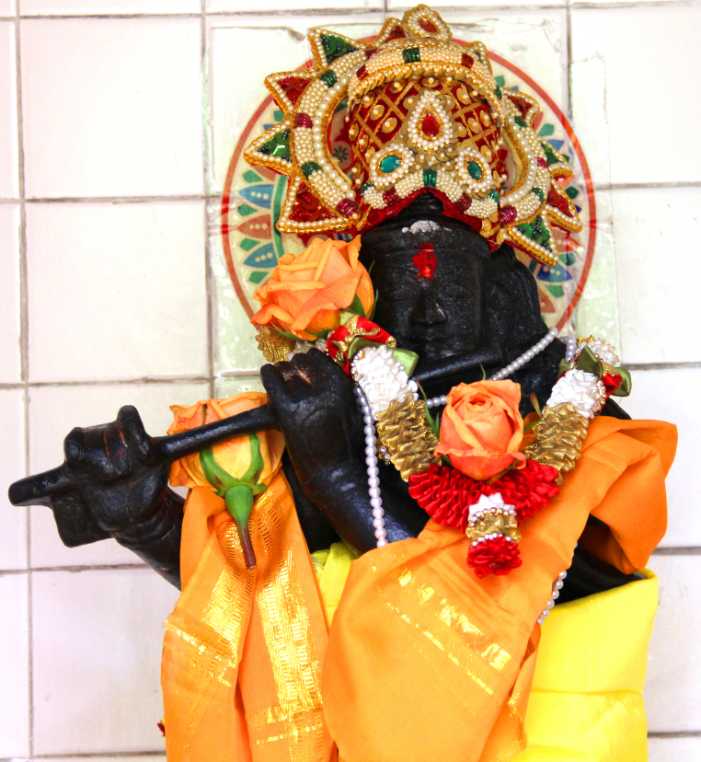
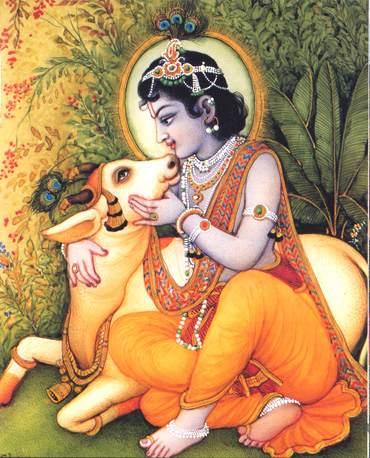
Salutations to Rama, the seventh incarnation of Vishnu, the incarnation of righteousness and Divine conduct.
- Hare Rama Hare Rama Rama Rama Hare Hare
- Hare Krishna Hare Krishna Krishna Krishna Hare Hare
This is known as “Maha Mantra” meaning “Great Mantra”. It is said to be the most powerful one in this Iron Age (Kali Yuga). It is for this reason that the Mantra should always be sung in its entirety and not broken in any way. This Mantra can be chanted to help bring about peace in the world it also brings purity to the mind and the heart of the chanter.
- Satguru Natha Sri Guru Natha
- Jaya Guru Natha Sivananda
- Sivananda Sivananda
- Sivananda Satguru Devo
Salutations to Master Sivananda. Satguru = The Guru who realized the truth. Natha = Master. Deva = Divine.
- Vishnudevananda Vishnudevananda
- Vishnudevananda Sri Guru Natha
Salutations to Swami Vishnudevananda
- Om Namah Sivaya (4x)
This is the Mantra of Lord Siva, the destroyer of all evil, our true Self, the primordial Yogi. This Mantra destroys all negative tendencies. Gives harmony and poise, both internal and external. Gives intuitive knowledge, integration of mind and intellect, great strength in spiritual practices. Protects one from the effects of past bad Karma.
- Om Namo Narayanaya (4x)
The Mantra of Lord Vishnu (also known as Narayana) is chanted to invoke His all-pervading power of mercy and goodness. It is through His Grace that Righteousness prevails. Repetition of this Mantra confers infinite love, prosperity, power, glory, wisdom, and total liberation. It gives the ability to dissolve obstacles resulting from egoism and ignorance.
- Om Namo Bhagavate Vasudevaya (2x)
The Mantra of Krishna (also called Vasudeva) is chanted to remind us
of all His wonderful teachings, as Bestower of the Bhagavad Gita on mankind, etc. It grants enjoyments as well as spiritual realization, gives success in all enjoyments as well as spiritual realization, and gives success in all undertakings.
- Om Namo Bhagavate Sivanandaya
- Om Namo Bhagavate Satguru Nathaya
Salutations to the Divine Sivananda.
Salutations to the Divine Satguru, our Master.
- Om Namo Bhagavate Vishnudevanandaya
- Om Namo Bhagavate Sri Guru Nathaya
Salutations to Swami Vishnudevananda.
- Sri Ram Jaya Ram Jaya Jaya Ram (2x)
Salutations to Rama, the seventh incarnation of Vishnu, the incarnation of righteousness and Divine conduct.
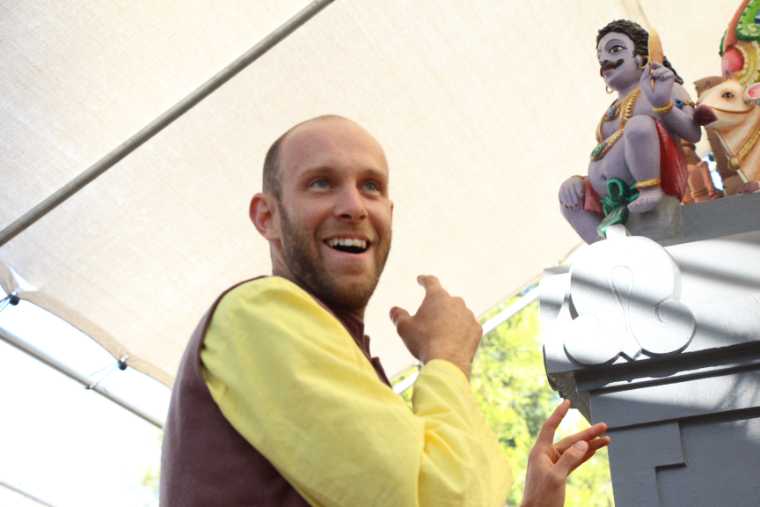
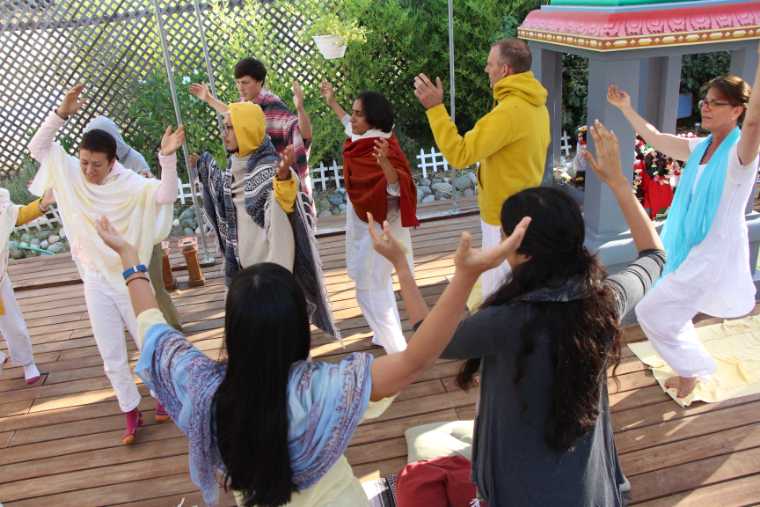
- Anjaneya Anjaneya Anjaneya Pahimaam
- Hanumanta Hanumanta Hanumanta Rakshamaam
Salutations to Hanuman, who is also called Anjaneya. Hanuman is the perfection of devotion. He is the greatest and the most selfless devotee of Lord Rama. He is considered to be a semi-deity, for he is the son of the wind-god. He possesses great strength and courage.
- Dattatreya Dattatreya Dattatreya Pahimaam
- Dattaguru Dattaguru Dattaguru Rakshamaam
Dattatreya is an incarnation of Brahma, Vishnu, and Siva. He is one of the original Gurus of Advaita Vedanta.
- Sankaracharya Sankaracharya
- Sankaracharya Pahimaam
- Advaita Guru Advaita Guru
- Advaita Guru Rakshamaam
Sankara, the great Master (Acharya), was the great propagator of Kevala (unconditioned) Advaita (non-dualistic) Vedanta, and the founder of the order of Dasanami Swamis. Our lineage comes from this tradition.
- Krishnam Vande Jagad Gurum Sri
- Krishnam Vande Jagad Gurum
Again, Krishna is addressed as the World (Jagat) Teacher (Guru). Here we thank Him (Vande).
- Anandoham Anandoham Anandambrahm Ananda
- I am Bliss, I am Bliss, Bliss Absolute, Bliss I am
- Om Namah Sivaya (4x)
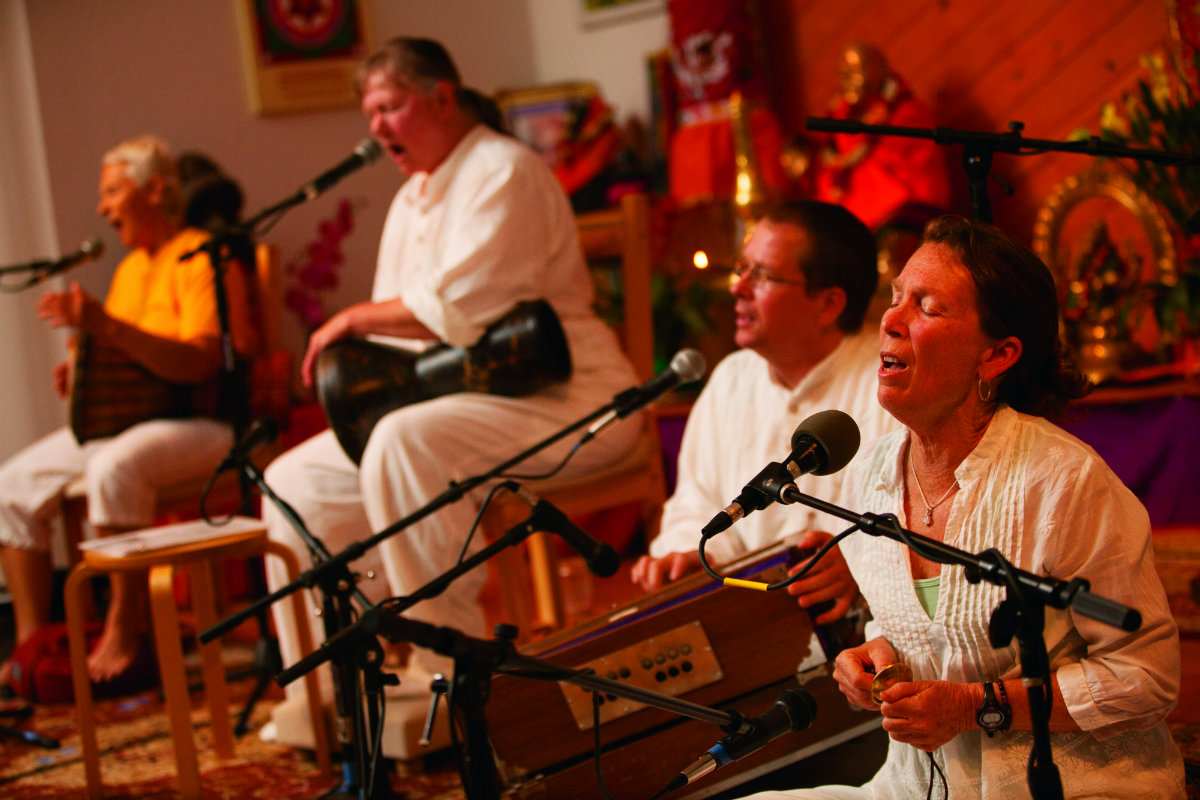
Maha Mrityunjaya Mantra
- Om Tryambhakam – Moksha Mantra
The Om Tryambhakam is a life-giving Mantra. In these days, when life
is very complex, accidents are an everyday affair; this Mantra wards off deaths by snakebite, lightning, motor accidents, fire, cycle, water, air accidents and accidents of all kinds. Besides, it has a great curative effect for diseases. It should be repeated before any travel.
It is also a Moksha-Mantra and bestows liberation. It is a Siva Mantra. The Mantra should be repeated 3, 9, 27 or 108 times. Especially on your birthday, repeat this Mantra as many times as possible. This will bestow on you health, long life, peace, liberation and prosperity.
- Om Tryambhakam Yajamahe
- Sugandhim Pushtivardhanam,
- Urvarukamiva Bandhanan
- Mrityor Mukshiya Maamritat
Universal Prayer by Swami Sivananda
- O Adorable Lord of Mercy and Love,
- Salutations and prostrations unto Thee.
- Thou art Omnipresent, Omnipotent and Omniscient.
- Thou art Sat-chid-ananda.
- Thou art Existence, Knowledge and Bliss Absolute.
- Thou art the Indweller of all beings.
- Grant us an understanding heart, equal vision,
- Balanced mind, faith, devotion and wisdom.
- Grant us inner spiritual strength to resist temptation
- And to control the mind.
- Free us from egoism, lust, anger, greed, hatred and jealousy.
- Fill our hearts with Divine Virtues.
- Let us behold Thee in all these names and forms.
- Let us serve Thee in all these names and forms.
- Let us ever remember Thee.
- Let us ever sing Thy glories.
- Let Thy name be ever on our lips.
- Let us abide in Thee for ever and ever.
- Om Bolo Satguru Sivananda Maharaj Ji Ki! Jaya!
- Om Bolo Sri Vishnudevananda Maharaj Ji Ki! Jaya!
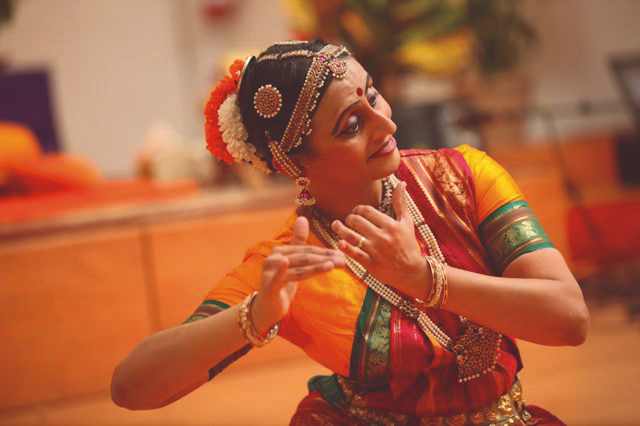
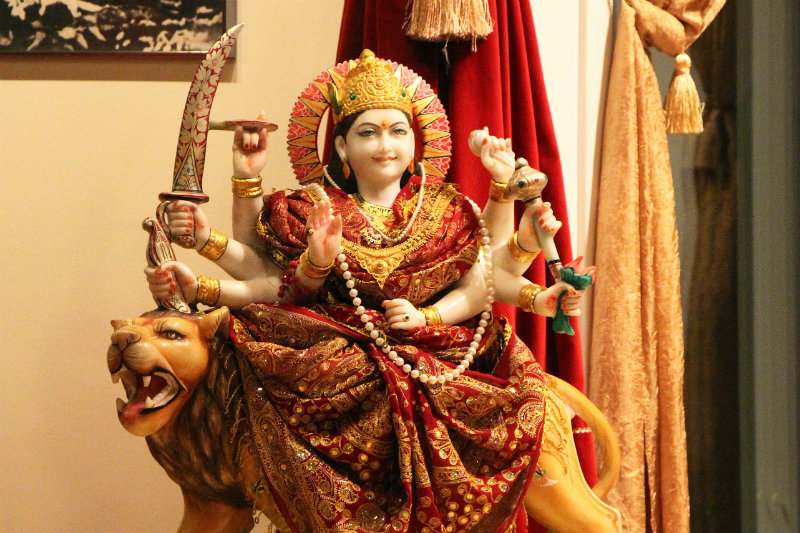
Arati
This is a ceremony of waving the light and chanting the names of various aspects of God as well as honoring the gurus, saints, and prophets of various religions, invoking their wisdom and light. After the chanting, we symbolically bring, with both hands, the flame towards our eyes and third eye, imbibing the light. After this, we prostrate towards the altar onto the ground, a symbolic gesture of humility and openness to receive Divine Wisdom. After prostration, the devotee receives prasad charged with the sacred energies of Arati. Prasad is an offering of sweet fruits and different foods to the Lord.
Swami Sivananda says, “Don’t neglect outward symbols. They are very beneficial. When viewed from the right angle or vision you will find that they play an important part in your material as well as spiritual life.”
- Jaya Jaya Arati Vighnavinayaka
- Vighnavinayaka Sri Ganesha
- Jaya Jaya Arati Subramanya
- Subramanya Kartikeya
- Jaya Jaya Arati Venugopala
- Venugopala Venulola
- Papavidura Navanita Chora
- Jaya Jaya Arati Venkataramana
- Venkataramana Shankataharana
- Sita Rama Radheshyama
- Jaya Jaya Arati Gauri Manohara
- Gauri Manohara Bhavanishankara
- Sambasadasiva Uma Maheshvara
- Jaya Jaya Arati Raja Rajeshwari
- Raja Rajeshwari Tripura Sundari
- Maha Lakshmi Maha Saraswati
- Maha Kali Maha Shakti
- Jaya Jaya Arati Anjaneya
- Anjaneya Hanumanta
- Jaya Jaya Arati Dattatreya
- Dattatreya Trimurti Avatara
- Jaya Jaya Arati Adityaya
- Adityaya Bhaskaraya
- Jaya Jaya Arati Senishwaraya
- Senishwaraya Bhaskaraya
- Jaya Jaya Arati Sankaracharya
- Sankaracharya Advaitagurave
- Jaya Jaya Arati Satguru Natha
- Satguru Natha Sivananda
- Jaya Jaya Arati Vishnudevananda
- Vishnudevananda Vishnudevananda
- Jaya Jaya Arati Agastya Munaye
- Agastya Munaye Sri Rama Priyane
- Jaya Jaya Arati Ayyappa Swamiye
- Ayyappa Swamiye Dharma Shastave
- Jaya Jaya Arati Jesus Gurave Moses Gurave Buddha Gurave
- Jaya Jaya Arati Mohammed Gurave Guru Nanak Gurave
- Samastya Gurubhyo Namah Jaya Jaya Arati Venugopala
- Om Na Tatra Suryo Bhati
- Na Chandra Taarakam
- Nema Vidyuto Bhanti Kutoyaamagnihi
- Twameva Bhanta Manubhati Sarvam
- Tasya Bhasa Sarvamidam Vibhati
- Om Gange Cha Yamune Chaiva
- Godaveri Saraswati
- Narmade Sindhu Kaveri
- Namastubhyam Namo Namah
Dedication Song
- Twameva Mata Cha Pita Twameva
- Twameva Bandhuscha Sakha Twameva
- Twameva Vidya Dravinam Twameva
- Twameva Sarvam Mama Deva Dava
O God of Gods, Thou alone art my mother, father, relative, friend, learning, wealth and everything.
- Kayena Vacha Manasendriyarva
- Buddhyatmanava Prakriter Svabhavad
- Karomi Yad Yad Sakalam Parasmai
- Narayana Iti Samarpayami
Whatever actions I perform with my body, speech, mind, senses, intellect, my nature or my emotions, all these I dedicate to the Supreme Lord.
- Sarva Dharman Parityajya
- Mam Ekam Sharanam Vraja
- Aham Tva Sarvapapebhyo
- Mokshayishyami Ma Succha
Abandoning all duties, take refuge in Me (the Lord) alone, I will liberate thee from all sins, grieve not. (from Bhagavad Gita XVIII.66)
Yoga Teacher Training Course
Check out our 200-hour Yoga Alliance certified Yoga Teacher Training Courses offered twice a year in California, 3x in Vietnam, once in China and once in Japan.
Foundational Courses
Choose from upcoming courses for beginners and intermediate level students.
Yoga Vacation
Rejuvinate your body and mind. Experience and progress with daily Yoga classes. Learn the 12 basic asanas and pranayama. Enjoy daily meditation, chanting, and organic vegetarian meals.
Check out our Blog
Our Sivananda Yoga Farm Blog has numerous articles, videos, and talks given by our senior teachers over the years.
OUR TEACHINGS
The contents you will find here are reproduced from the book “Essentials of Yoga Practice and Philosophy” compiled by Swami Sitaramananda.
Satsang
What is Satsang? What is Meditation? What is Kirtan Chanting?
5 Points of Yoga
Exercise, Breathing, Relaxation, Diet, Positive thinking and Meditation
Health
What is True Health? What is health of body, mind, and spirit?
Prana
What is Prana? How can I access prana? What is kundalini energy?
Raja Yoga
What is Raja Yoga? What are the eight limbs? What is ashtanga yoga?
Jnana Yoga
Who am I? What is Vedanta Philosophy? What is Sat-Chit-Ananda?
Mantras
What is a mantra? What is sanskrit? How do I get a mantra?
Yoga Poses
What is in a basic Sivananda class? What are the benefits? What are some guidelines?
Yoga
What is Yoga? Where did Yoga come from? What is Classical Yoga?
Life
What is the meaning of Life? What is Freedom? What is Happiness?
Mind
What is the mind? How does the mind work? Am I my mind?
Positive Thinking
What is thought? What are techniques to practice positive thinking?
Karma Yoga
What is Karma? What is Karma Yoga? How to practice karma yoga?
Bhakti Yoga
What is True Love? Who is God? What is an inner Bhava?
Kirtan Chanting
What is Kirtan Chanting? How does it work? What do the chants mean?
Ayurveda
What is ayurveda? What are the 3 doshas? What is disease according to ayurveda?
